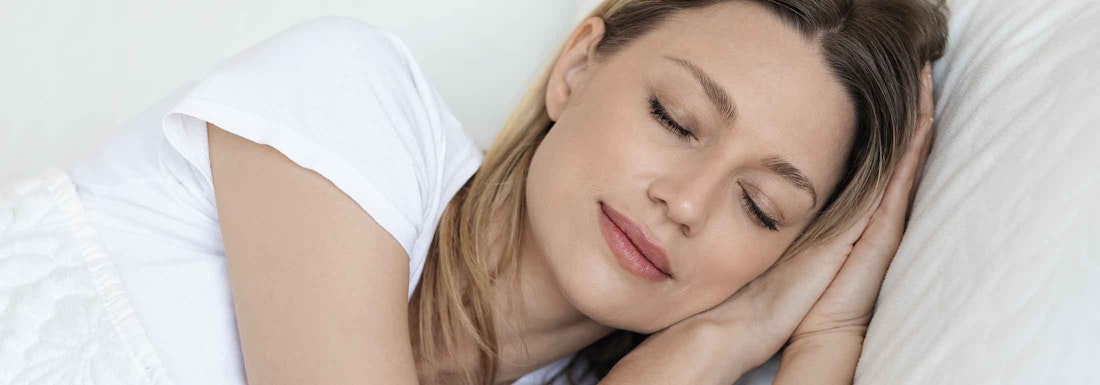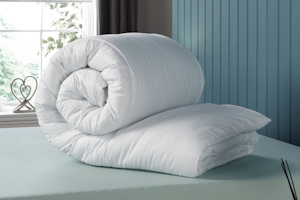04 Jun 2025

What Color Light Helps You Sleep?
27 Sep 2023
Sleep is vital for our health and well-being, and the type of light we are exposed to before bedtime plays a significant role in determining the quality of our slumber. Our bodies are sensitive to various colours of light, each of which has a unique impact on our sleep cycle. A solid understanding of the relationship between colours of light and sleep can help individuals create a bedtime environment conducive to a good night's rest.
Research has shown that certain colours of light can have a soothing effect, promoting relaxation and melatonin production, thus preparing the body for sleep. Conversely, other colour hues might activate alertness and suppress melatonin, which is problematic for those seeking a peaceful night of rest. Balancing the exposure to and use of different colours of light, especially in our sleep environments, is integral to achieving better sleep quality and overall well-being.
Key Takeaways
- The type of light we are exposed to influences sleep quality
- Some colours of light can have a calming effect, while others can trigger alertness
- Balanced exposure to different colours of light is crucial for better sleep and well-being
Understanding Light and Sleep
Our exposure to light has a profound impact on our sleep patterns and overall wellbeing. The human body has a natural sleep-wake cycle, also known as the circadian rhythm, which is regulated by light. Exposure to natural light during the day helps regulate our internal clock, keeping us alert and energised. Conversely, the type of light we are exposed to during the evening and nighttime can affect how easily we can fall asleep and the quality of our rest.
Artificial light, particularly blue light emitted from electronic devices, can disrupt our sleep as it suppresses the production of melatonin, the hormone responsible for managing our sleep-wake cycle. Melatonin production is typically stimulated by darkness and helps signal to the body that it is time for sleep. Therefore, it is important to consider the impact of light colour on our sleep and overall health.
Research indicates that warm hues of red, orange, and yellow are better for preparing the mind and body for sleep. These colours do not suppress melatonin production as significantly as blue light, helping to promote a more restful night. Red light, in particular, has shown some evidence of stimulating sleep not only because it does not interfere with melatonin production but also due to its calming effect on the body.
Individual preferences may also play a role in determining the best colour light for sleep. Some people find that certain colours, such as green and blue, evoke a calming and relaxing atmosphere that contributes to more positive emotions and associations with sleep. The key is to choose a light colour that encourages relaxation, minimises sleep disturbances and promotes a healthy sleep environment.
In conclusion, understanding the relationship between light and sleep is crucial in creating an optimal sleep environment. The choice of light colour can significantly impact the quality of our sleep, and selecting a warm, calming hue is essential for promoting healthy sleep patterns.
Impact of Different Colours on Sleep
The effect of light on sleep can vary depending on its colour. Warmer hues of light, such as yellows and oranges, are generally considered better for sleep compared to cooler light, like blue light from electronic devices1. This is because exposure to blue light during the evening can suppress the production of melatonin, the hormone responsible for sleep regulation2.
Blue and violet light have been found to cause delays in sleep onset. In a study on mice, blue light exposure delayed sleep onset by 16 to 19 minutes, whereas violet light caused a delay of 5 to 10 minutes2. In contrast, green light had less of an impact on sleep onset, allowing for a better quality of sleep compared to blue and violet light.
While avoiding bright light before bedtime is a common recommendation, it is the colour of light that truly matters. Blue light has the most significant impact on mood and sleep, followed by white light3. Therefore, it is essential to reduce the presence of blue and white light in the bedroom for better sleep quality.
To summarise, the colours of light can greatly influence sleep. Warmer colours like yellow and orange are preferable, while cooler colours like blue and violet can negatively impact sleep. By limiting the exposure to blue and white light during the evening, one can aim for a healthier and more restful night's sleep.
Blue Light and Sleep
Effects of Blue Light
Blue light has a wavelength of approximately 480nm, which can have significant effects on sleep. Exposure to blue light, particularly in the evening, can suppress melatonin production. Melatonin is a hormone responsible for regulating sleep-wake cycles. As a result, blue light can interfere with falling asleep and staying asleep, leading to poorer sleep quality.
Aside from impacting sleep, prolonged exposure to blue light may also have potential health ramifications. Some studies suggest that it can contribute to eye strain, digital eye fatigue, and even an increased risk of certain eye conditions. Additionally, disrupted sleep due to blue light exposure can lead to mood changes, reduced cognitive function, and weakened immune system.
Blue Light Sources
The primary sources of blue light exposure in modern life come from electronic devices such as smartphones, computers, tablets, and televisions. These screens emit blue light that can disrupt natural sleep cycles and contribute to sleep disturbances.
Moreover, energy-efficient lighting options, such as LED and compact fluorescent lights (CFLs), can also emit blue light, which can have similar effects on sleep patterns. To mitigate the adverse impacts of blue light exposure, consider the following approaches:
- Limit screen time in the evening, especially within 2-3 hours before bedtime.
- Use software or applications that reduce blue light emission from electronic devices, such as built-in night mode features or blue light filter apps.
- Opt for warm-toned light bulbs in bedrooms and living spaces.
- Consider wearing blue light blocking glasses if screen time is unavoidable in the evening.
By reducing exposure to blue light, individuals can improve their sleep quality and overall health.
Red and Orange Light and Sleep
Effects of Red and Orange Light
Red and orange light can have a positive impact on sleep. These warm hues help prepare the mind and body for rest. Red light, in particular, has been shown to induce the production of melatonin, the sleep hormone that helps individuals mentally and physically relax and drift off to sleep. Melatonin levels naturally rise in response to sunlight, and red light exposure can help mimic this effect.
Research has indicated that dimming blue light may be more restful than yellow light, but red and orange lights are considered even more suitable for encouraging sleep. These warm colours can help counteract the stimulating effects of blue light emitted from electronic devices, setting the stage for a better night's rest.
Red and Orange Light Sources
To incorporate red and orange light into your sleep routine, consider using light bulbs that emit a warmer glow in your home, particularly in the evening hours. For example:
- Replace regular white or cool blue-toned LED lights with red- or orange-tinted bulbs in your bedroom.
- Use red or orange lampshades to filter the light emitted from bedside lamps.
- Utilise candlelight, as candles typically emit a warm, orange glow that promotes relaxation.
- Opt for apps and devices with night mode settings that reduce the amount of blue light emitted by phone screens, tablets, or laptops at night.
By incorporating red and orange lighting into your sleeping environment, you may find it easier to wind down and drift off to sleep, enhancing your overall sleep quality and health.
Green Light and Sleep
Green light has been found to be an effective colour for promoting sleep for some individuals. While each person's colour preferences may vary, research has shown that certain colours, such as blue and green, tend to elicit more positive emotions and associations that can have a beneficial impact on sleep.
Green light exposure is believed to have a soothing effect on the mind and body, allowing individuals to relax and more easily transition into sleep. The calming properties of green light can be particularly helpful for those who struggle with insomnia or other sleep-related issues.
It is worth noting that the effectiveness of green light for sleep can also be influenced by its intensity and duration of exposure. Gentle, low-intensity green light during the evening hours can help signal to the brain that it is time for rest, thereby synchronising the body's natural circadian rhythm.
Incorporating green light in the bedtime environment can be achieved through various means, such as using green-coloured bulbs or installing LED light panels that emit a soft green glow. Smart lighting solutions are also available, allowing users to control light colour and intensity based on their individual preferences and sleep needs.
While green light may be an effective tool in promoting sleep for some, it is essential to consider one's personal preferences and the overall sleep environment. Tailoring a sleep-inducing environment to suit individual needs, combined with healthy sleep habits, is crucial for ensuring a good night's rest.
Using Light for Better Sleep
Getting a good night's sleep is crucial for maintaining overall well-being, and one of the factors that influences sleep quality is the colour of light in our surroundings. The human body has a natural sleep-wake cycle, and light plays a significant role in regulating this cycle, particularly when it comes to the colours we see before bedtime.
Warm Colours for Sleep: Research has shown that warm hues, including red, orange, and yellow, are better for preparing the mind and body for sleep. These colours have a calming effect on the body, which helps in the transition from wakefulness to sleep. It is advisable to switch to warm lights in the home after sunset to promote a sleep-friendly environment.
Avoiding Blue Light: On the other hand, blue light is well-known for disrupting sleep patterns. Technologies like mobile phones and computers emit bright blue light, which interferes with the body's production of melatonin, a sleep hormone. Limiting the use of these devices at least two hours before bedtime is a common recommendation for better sleep.
Other Factors to Consider: Whilst colour plays an important role, it is essential to consider other aspects of lighting as well. Dimming the lights or reducing the intensity of the illumination can assist in cueing the body for sleep. Incorporating blackout curtains or using an eye mask can also minimise exposure to external light sources, further enhancing sleep quality.
Incorporating these lighting strategies in your evening routine can aid in achieving a restful and rejuvenating sleep, ultimately leading to improved physical, mental, and emotional health.
The Role of Technology in Sleep Regulation
The advancements in technology have changed the way people sleep and regulate their circadian rhythm. Electronic devices such as smartphones, tablets, and televisions emit artificial light which affects the release of melatonin, the hormone responsible for sleep regulation. Exposure to bright lights and cool-toned colours like blue from these devices can inhibit melatonin production, making it more difficult for individuals to fall asleep at night.
However, it's important to note that not all artificial light is detrimental to sleep. Some colours of light are found to have a positive impact on sleep quality. For instance, red light stimulates melatonin production, helping people mentally and physically relax as they drift off to sleep. This is because red light has a longer wavelength than blue light, which signals the brain that it's time to rest.
To reduce the negative impact of artificial light, it's crucial to establish and maintain healthy habits surrounding technology use at night. Some practical tips to aid sleep include:
- Turning off electronic devices at least an hour before going to bed
- Using blue light-filtering apps or software on digital screens
- Installing warmer-coloured ambient lighting in the bedroom
Moreover, individuals can benefit from using smart sleep technology like sleep trackers, which monitor and provide insights into sleep patterns, helping to identify issues and improve overall sleep quality. The key is being aware of the role technology plays in sleep regulation, and implementing thoughtful adjustments to achieve better quality sleep.


